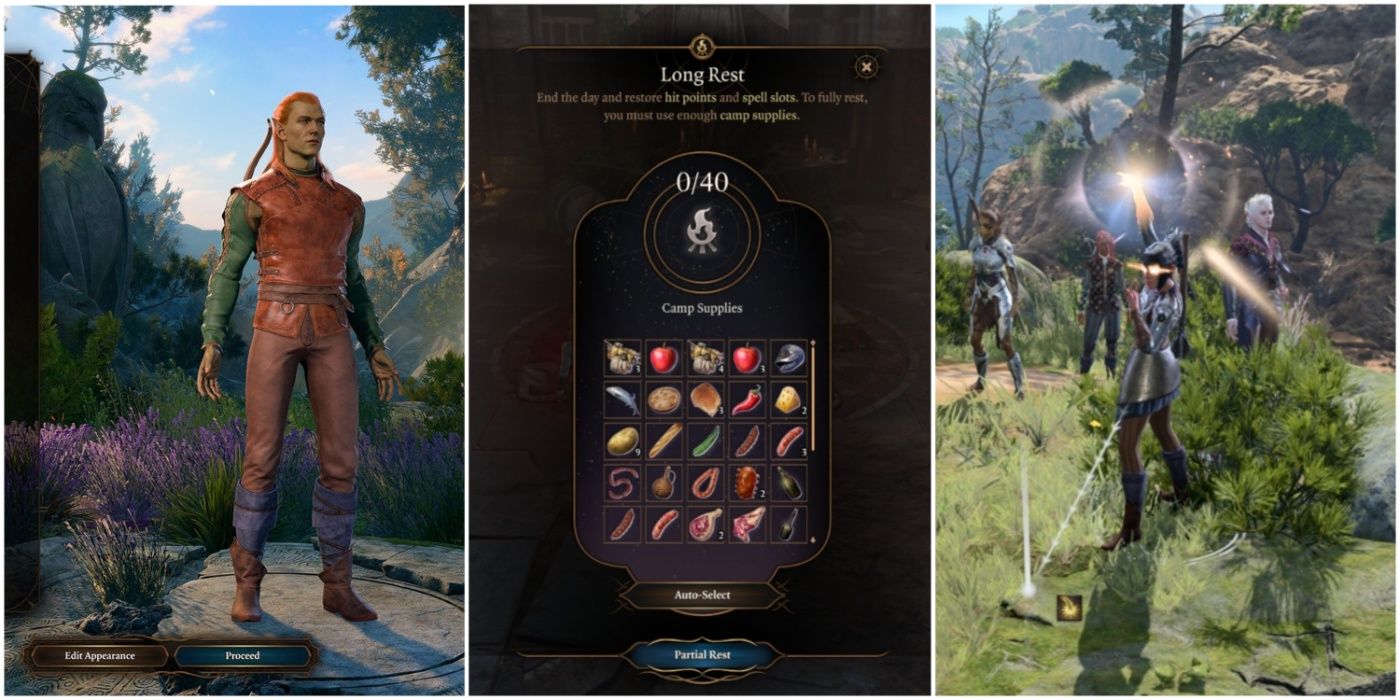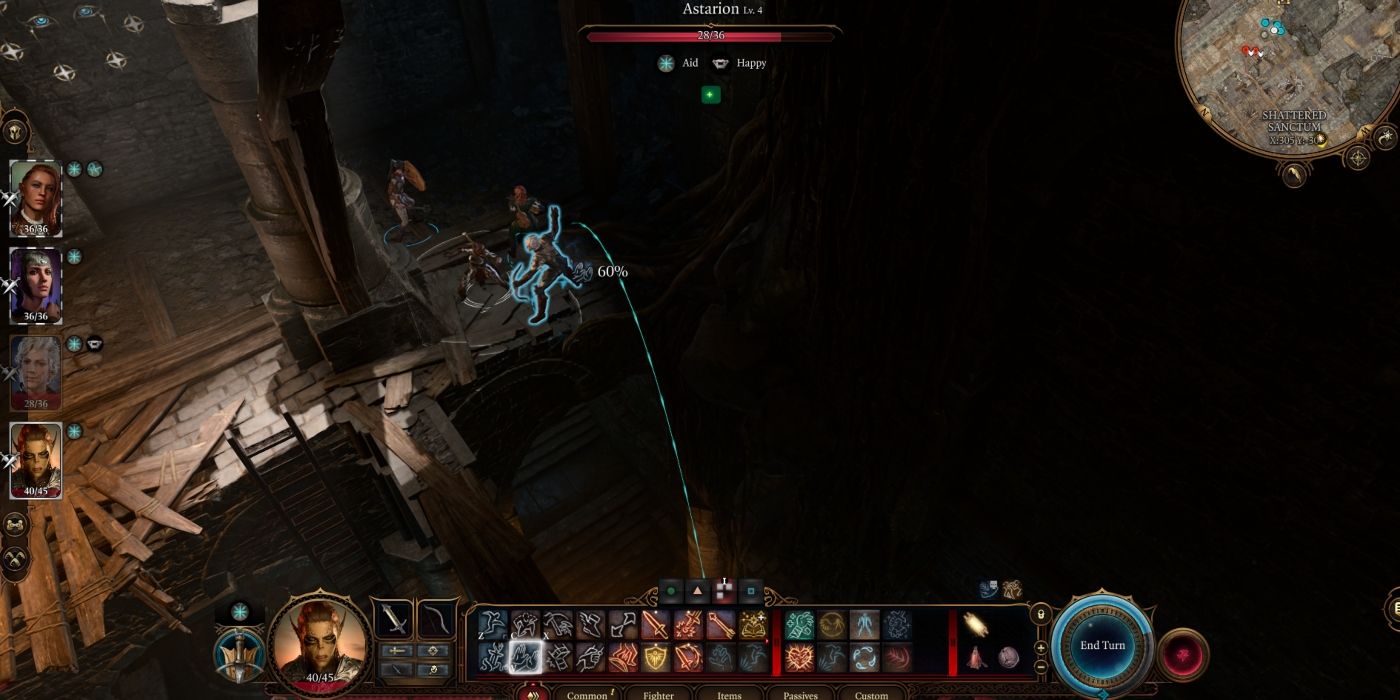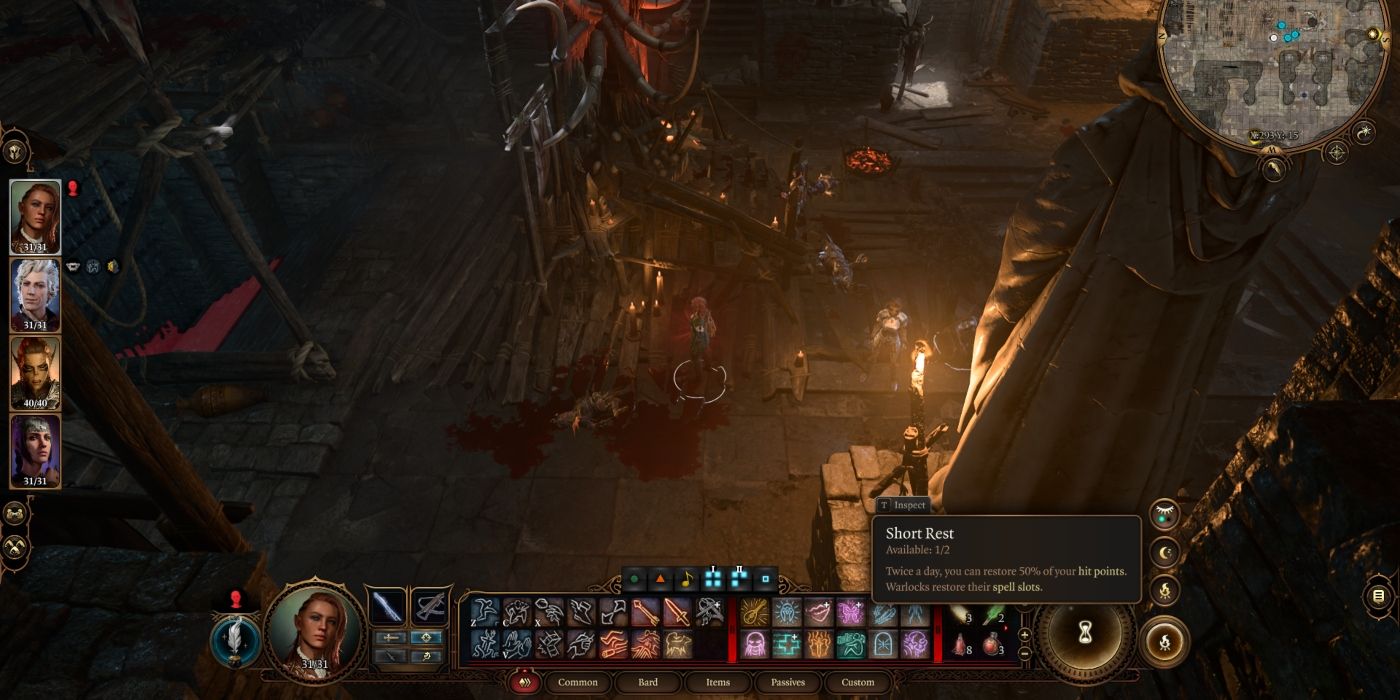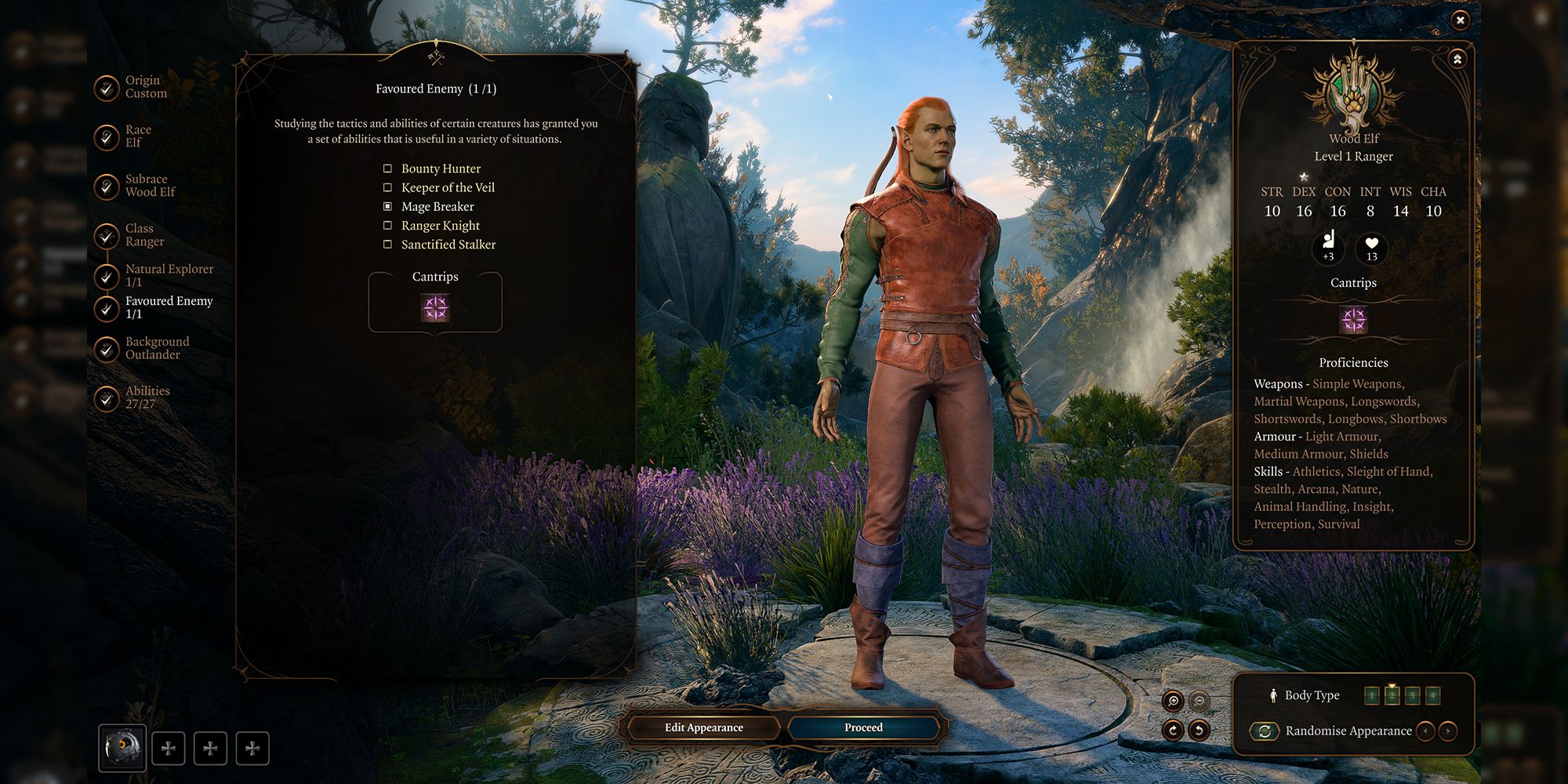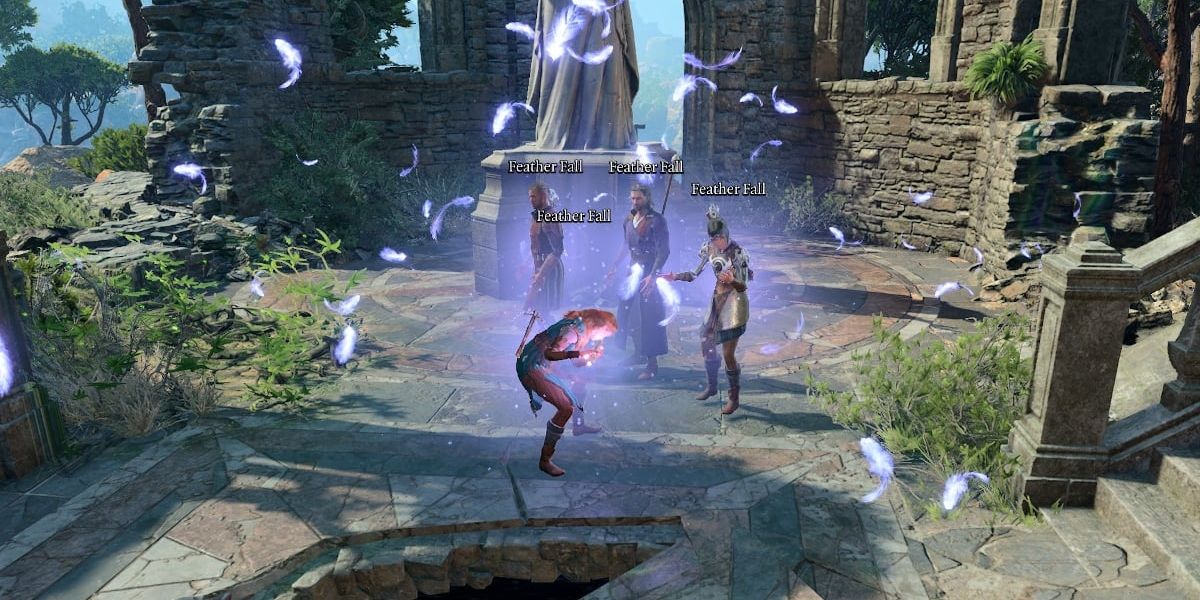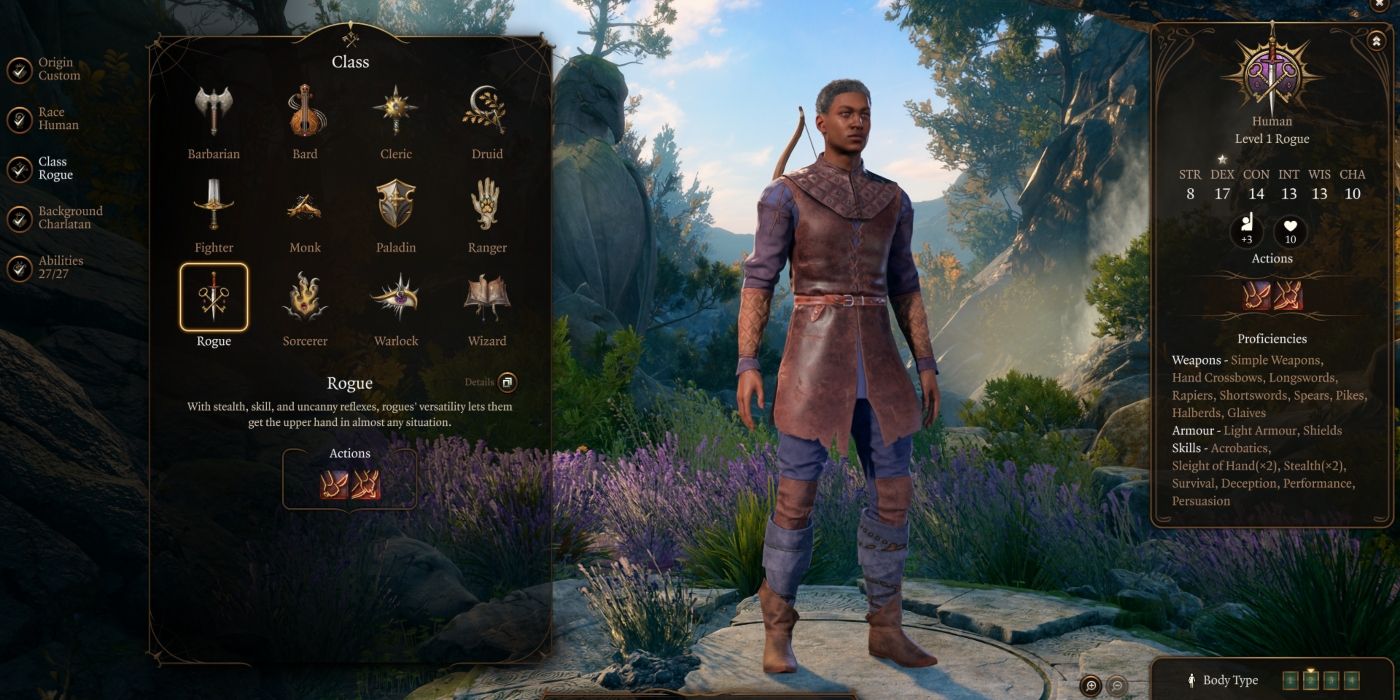Baldur’s Gate 3 is one of the closest representations of Dungeons & Dragons put to video games. It accurately recreates most of the D&D 5e ruleset, from turn-based combat to the ability checks characters have to make. However, Baldur’s Gate 3 is not a one-to-one replication of the game.
Baldur’s Gate 3 is riddled with changes to the D&D 5e ruleset from top to bottom. Many of these are minor, such as tweaks to specific abilities and their functionality. Some changes are much more substantial, with sweeping changes to how the D&D 5e rules work as a result.
10 More Default Bonus Actions
Baldur’s Gate 3 retains the basic turn structure of D&D 5e. Characters have movement, an action, a bonus action, and a reaction. However, it vastly expands on one of these categories. Some D&D 5e characters can go through an entire campaign without using their bonus action due to having no abilities that naturally use it. Baldur’s Gate 3 gives every character bonus actions by default.
Shoving a character is a bonus action in Baldur’s Gate 3 rather than an action-based attack option lik ein D&D 5e. Jumping, which happens as a part of movement in Dungeons & Dragons, is also a bonus action. There are also brand-new options, such as dipping weapons in a substance to increase their damage. This breadth of bonus action options also opens up brand-new tactical windows. For instance, a character can attack an opponent twice before shoving them off a ledge to finish the job.
9 Limited Short Rests
Resting is limited by practicality in D&D 5e. Characters can short rest to regain hit points and refresh abilities at any point, as long as they have an hour to spare without interruption. However, events continue to unfold while the PCs catch a breather. It’s impractical in dangerous areas, and the PCs are limited by their hit dice for regaining hit points.
Baldur’s Gate 3 simplifies short rests but imposes far more limits on them. Player characters can take a short rest instantly, even if enemies are just out of sight. This regains half of their hit points and short rest abilities. However, this can only be done twice before the party needs a long rest. The Baldur’s Gate 3 bard’s Song of Rest effectively gives a third short rest in a day rather than boosting the number of hit points regained during the rest.
8 Spellcasting On An Action And Bonus Action
One of D&D 5e‘s firmest limits on spellcasting is also one of its most often misunderstood rules. If a D&D spellcaster uses their bonus action to cast a spell, this limits the rest of their turn somewhat. They cannot cast any other spells that turn besides cantrips with a casting time of one action. This prevents them from burning through all their resources in one turn for immense effect.
Baldur’s Gate 3 has no such limitation. A player can cast all the spells they want, only held back by their one action and bonus action and their spell slots. A character who casts Shield of Faith with their bonus action is free to cast Guiding Bolt that turn as well. This is most significant for Baldur’s Gate 3 sorcerers, who can use the Quicken Spell Metamagic to cast almost anything as a bonus action.
7 Ranger Options
Many D&D 5e fans consider the ranger to be one of the game’s weakest and most underwhelming classes. Its unique features are often unrewarding, providing meager and situational benefits at best. Baldur’s Gate 3 has almost completely overhauled the ranger’s design by making their early-game choices more impactful.
In Baldur’s Gate 3, a ranger’s Favored Enemy doesn’t provide out-of-combat benefits to finding a specific creature type. It instead unlocks combat tools, such as Ranger Knight wearing heavy armor. Similarly, Natural Explorer has been overhauled to give a passive buff, such as resistance to fire damage.
6 Grouped Initiative
Much like D&D 5e, Baldur’s Gate 3 switches to turn-based gameplay as soon as combat begins. Characters take turns to move and attack in an order decided by their initiative. However, Baldur’s Gate 3 makes one significant change. In D&D 5e, creatures always take their turns one by one, even if they’re surrounded by allies in the initiative order.
Baldur’s Gate 3 makes things far more flexible. Allied characters who are next to each other on the initiative tracker can act simultaneously. This doesn’t just reduce the downtime between player turns. It also allows for strategies relying on specific orders of events or combinations of player abilities.
5 Bonus Action Feather Fall
Many D&D 5e spells have been altered significantly to work better in Baldur’s Gate 3‘s video game format. Few have seen greater changes than Feather Fall. In D&D 5e, Feather Fall is a reaction spell a creature uses when others are already falling. It slows their descent and prevents falling damage.
Baldur’s Gate 3 doesn’t allow for reactions this granular. Instead, Feather Fall is a bonus action buff spell that lasts for ten turns and switches off falling damage. This does prevent it from being used to save allies falling to their death in combat. However, it also lasts longer and affects more creatures, allowing entire jumping puzzles to be trivialized.
4 Preparing Spells At Any Time
Spell preparation is carefully regulated in D&D 5e. Prepared spellcasters like wizards and clerics have immense flexibility and their spellcasting, but they have to match it with forethought. Characters can only prepare new spells at the end of the long rest and must choose options that will be valuable for the next day.
Baldur’s Gate 3 does away with this restriction. Characters can change their prepared spells whenever they’re not in combat. This means a prepared spellcasting character in Baldur’s Gate 3 will almost never find themselves without the tools to tackle a problem ahead of them.
3 Camp Supplies
Long rests are a relatively straightforward affair in D&D 5e. Characters need to find a safe place for eight hours in which they don’t engage in strenuous activity. This limits a long rest from being taken in most dangerous environments. However, Baldur’s Gate 3‘s long rests automatically take place in a safe camp that can be traveled to from almost anywhere.
As a result, Baldur’s Gate 3 limits long rests with camp supplies to prevent patient players from resting after every encounter. Players have to supply enough food and drink for their group for a long rest to take effect. Otherwise, characters only get very limited benefits. This encourages players to space out their rest and hunt down food in the Baldur’s Gate 3 world.
2 Thief Rogue’s Fast Hands
The Thief rogue has some of Baldur’s Gate 3‘s most substantial changes to any character subclass. In D&D 5e, their Fast Hands ability expands how they can use their bonus action. D&D 5e Thief rogues can use items, disarm traps, or pick locks as a bonus action. In Baldur’s Gate 3, it instead gives them an additional bonus action.
This is unprecedented in Baldur’s Gate 3. Certain abilities temporarily give characters a second action, but nothing increases a character’s bonus actions, much less permanently. This gives the Thief rogue a significant niche in Baldur’s Gate 3 and makes it one of the most popular multiclass options.
1 High Ground Accuracy
D&D 5e does use tactical combat, but its rules on positioning are limited. Many D&D 5e groups play without battle maps or miniatures, limiting how granular these rules can be. As a video game, Baldur’s Gate 3 has no such restrictions. It makes significant adjustments to reward positioning in combat. The accuracy bonus from taking the high ground is by far the most significant.
In Baldur’s Gate 3, characters are significantly more likely to hit if they make a ranged attack from above their opponent. On the flipside, they’re far more likely to miss if attacking upwards. D&D 5e has nothing of the sort in its ruleset, but positioning now dominates many Baldur’s Gate 3 fights.
